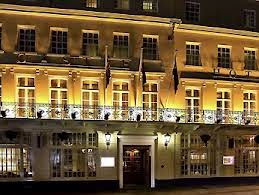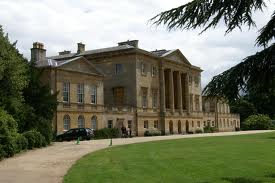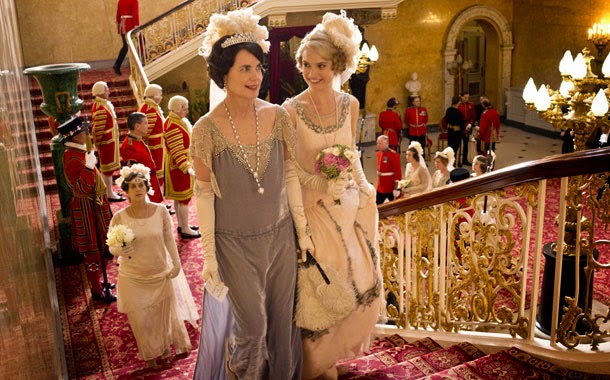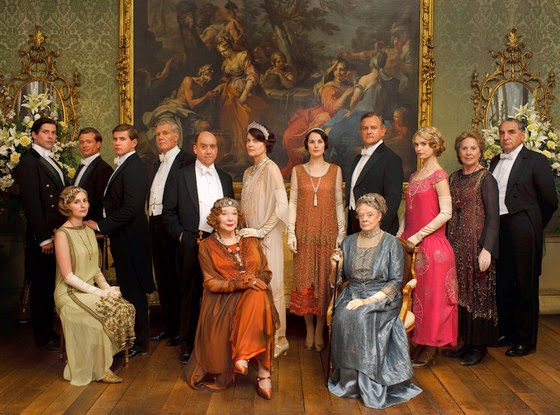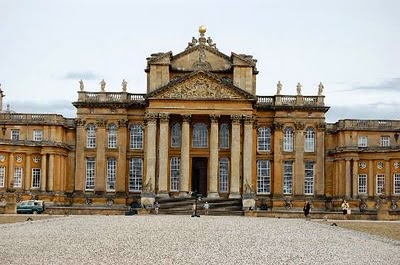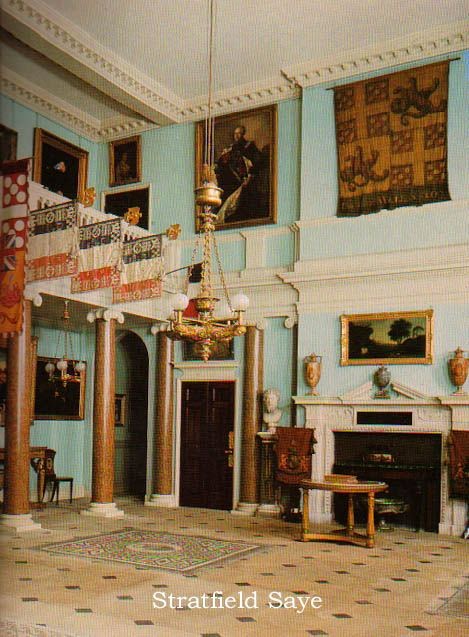DOWNTON ABBEY
When we visit Highclere Castle on Thursday, September 11, 2014, we will probably be thinking more of Downton Abbey, the PBS Masterpiece series, than of the sumptuous home of the Earls of Carnarvon. Victoria here, as eager to see the Castle/Abbey as anyone. I truly believe that a large part of the credit for DA’s success in America is due to the setting at Highclere Castle: The grounds, the enormous house designed in the most extravagant of Victorian neo-Gothic style, the magnificent interiors of the family’s drawing rooms and bedchambers, the stark simplicity and dullness of the servants’ world below stairs. The contrasts could not be more vivid.
Downton Abbey, PBS Masterpiece
The Crawley family, headed by Robert, Earl of Grantham (High Bonneville), live at the fictional Downton Abbey, filmed at Highclere Castle, the home of the Earls of Carnarvon. Most of the upstairs scenes are filmed in the rooms of the Abbey or on the grounds. The servants quarters have been recreated as they would have been in 1900 to 1930 at studies on nearby Ealing, West London. In this 4-minute video, creator and writer Julian Fellowes takes you through Highclere. Click here.
Another look at Highclere as Downton Abbey is an 8-minute fragment of the program Countrywise visit. Click here
As almost every one knows, Downton Abbey has been a phenomenal success with audiences in Britain and North America, and elsewhere. The four years of the series have won numerous awards for its creator, Julian Fellowes, for its costumes and settings, and for the actors, some of whom have become “household names.” Probably taking first place would be Violet, Dowager Countess of Grantham, whose pithy comments delight audiences on both sides of the Atlantic. Click here to see some favorite moments.
The Inimitable Maggie Smith As Violet, Dowager Lady Grantham
We’ve seen four seasons of Downton Abbey now, and all the episodes are available on DVD and from PBS and other sources. The fifth season is in production and will be seen in the U.K. in the autumn and on PBS Masterpiece in early 2015.
©Nick Briggs/Carnival Film and Television Limited 2013 for MASTERPIECE
Click here for a 13-minute video on the making of Downton Abbey, featuring many of the actors as well as the executive producer, writer, and historical advisor among others.
Although we’ve all seen the fourth season, you might enjoy the preview, a tease of just 90 seconds, put out before it played. Click here.
So to stand in Highclere Castle yourself, come along with us on The Duke of Wellington Tour. September 4-14, 2014. All the details are here.
See you in London!
